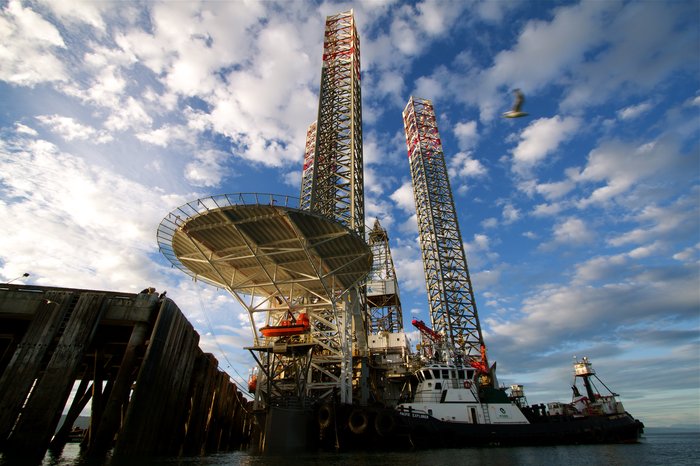Alaska Oil and Gas
Last modified: 12th August 2019

Oil and Gas Articles
- Benefits and Risks of Massive Hydraulic Fracturing
- Chukchi Sea Oil and GasDevelopment
- Coalbed Methane
- Drift River Oil Terminal
- Exxon Valdez Oil Spill
- Hydrofracking in Alaska
- Natural Gas in Cook Inlet
- Northern Gateway Pipeline Project (Canada)
- Oil Degradation in the Sea
- Sulfolane Contamination in Alaska
- Unconventional Oil in Alaska
The oil and gas industry is the single largest driver of the Alaskan economy, responsible for over a quarter of the state’s GDP. The industry directly employs around 4,500 people, indirectly supports over 8,000 additional jobs, and spends more than $5 billion annually on supporting services in the state. In addition, taxes from the industry supply the vast majority of the state’s General Fund, as well as supporting many local and tribal governments. Interest on funds from the oil and gas industry also provides for the yearly payouts to Alaskan residents from the state’s Permanent Fund.
Oil activity in the state is primarily concentrated into two areas: the North Slope, home to the famous Prudhoe Bay oil field, and Cook Inlet. The Trans-Alaskan Pipeline System transports oil from the North Slope to Valdez in south-central Alaska. Most of it continues by tanker to the West Coast of the US for refining. Oil production has been declining for decades–diminishing over the last 20 years 6.0 MB on the North Slope, and over the last 40 years in Cook Inlet.

Cook Inlet also produces significant quantities of natural gas, which provides around three-fifths of the energy in the state. Gas reserves and production in Cook Inlet are also declining 4.3 MB. A lot of interest has been generated recently by the idea of a natural gas pipeline from the North Slope, estimated to have reserves of 34 trillion cubic feet. This gas, which is currently either lost during oil extraction, or used for re-injection into oil wells, might either be exported from a liquefied natural gas (LNG) terminal, piped to Canada, or used for energy generation in the state. There is also interest in–and significant opposition to–increased oil exploration and drilling activities in the National Petroleum Reserve, in the Artic National Wildlife Refuge, and offshore in the Chukchi Sea.
The recent Deepwater Horizon blowout, and Alaskan experiences with the Exxon Valdez disaster and the 2006 Prudhoe Bay oil spill, highlight the well-known risks associated with the extraction and transportation of oil. While Alaska depends heavily on the oil industry for jobs and tax revenue, the integrity of the environment is also essential to the Alaskan economy. Even in the absence of major accidents like offshore blowouts, pipeline leaks, or tanker spills, oil development has serious environmental impacts. The oil and gas industry is responsible for an average of 450 spills on the North Slope every year, ranging from crude oil to diesel to drilling mud. Oil and gas infrastructure and exploration disrupt animal migration patterns, human subsistence lifestyles, and the wilderness character of an area.
Created: Jan. 19, 2018